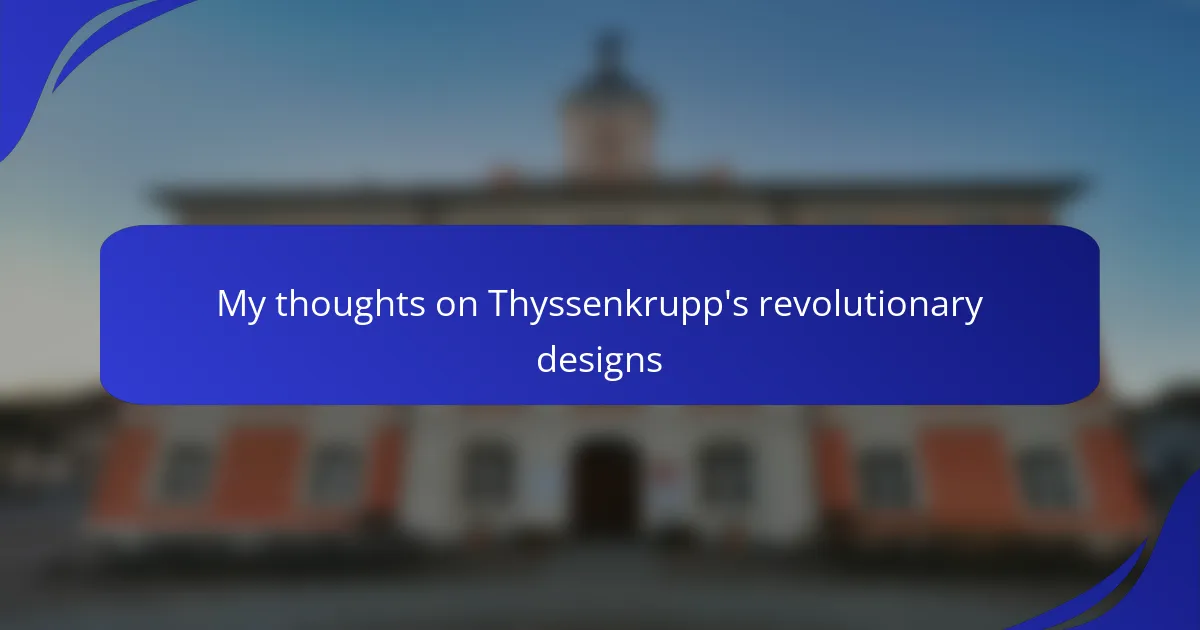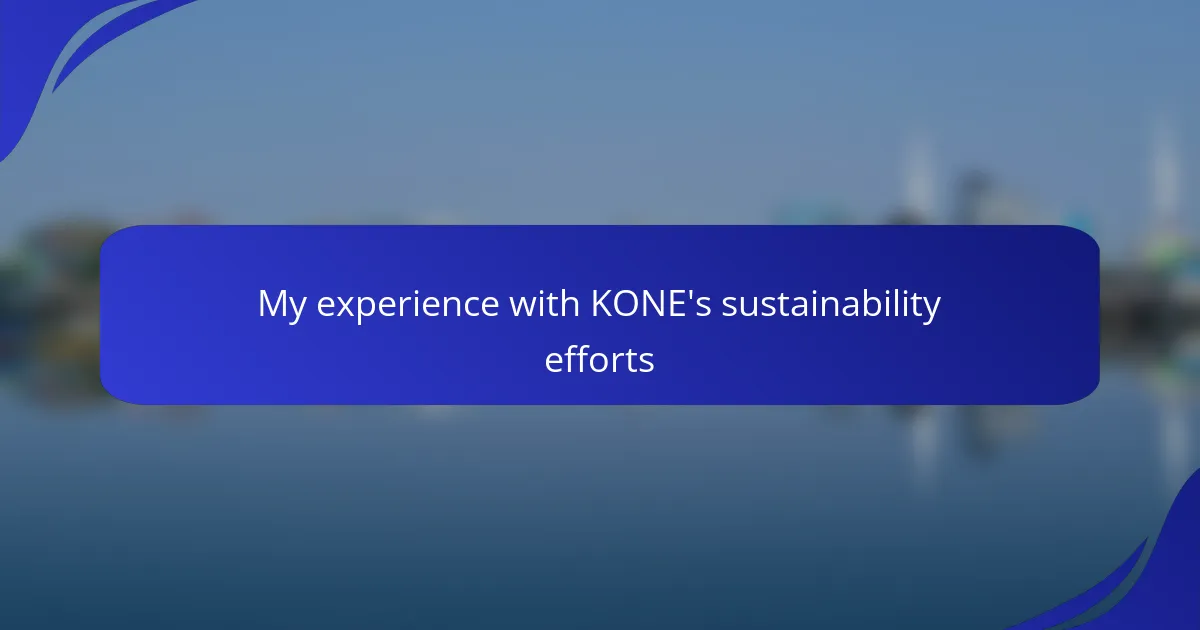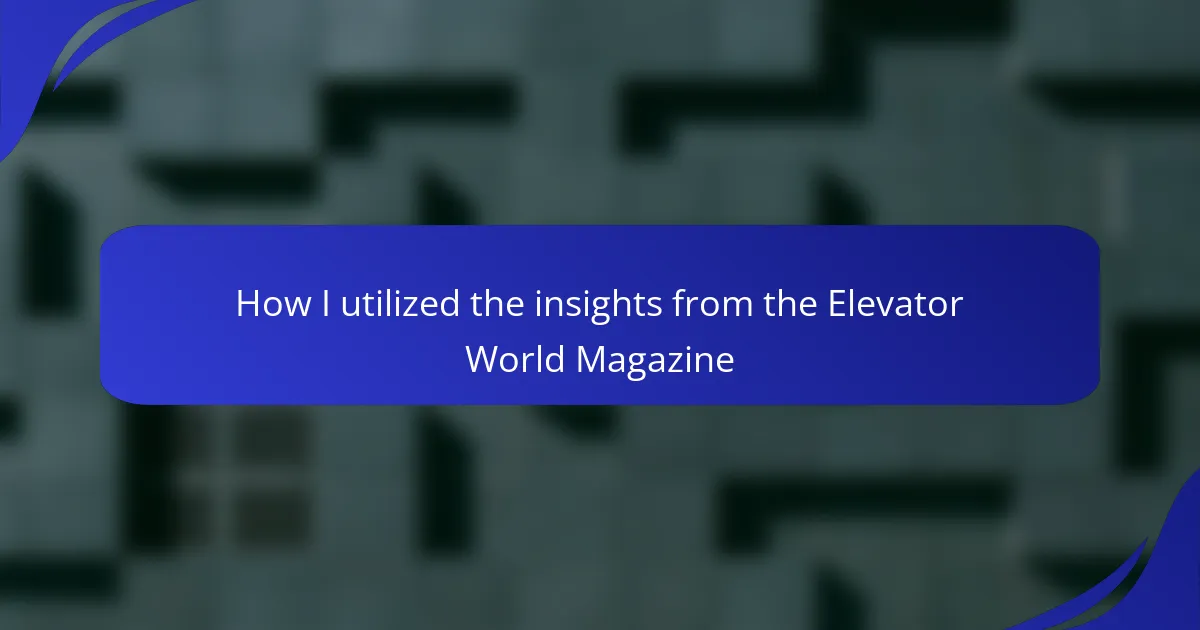Key takeaways
- The elevator industry has evolved from ancient manual lifts to advanced systems like Thyssenkrupp’s MULTI, which uses magnetic levitation for both vertical and horizontal movement.
- Innovations such as IoT integration and eco-friendly designs enhance user experience, improve efficiency, and promote sustainability in building operations.
- Future trends emphasize smart technology, safety, and energy efficiency, making elevators more adaptable and user-friendly.
- Thyssenkrupp’s focus on combining aesthetics with functionality exemplifies the potential for innovation to transform architectural spaces.
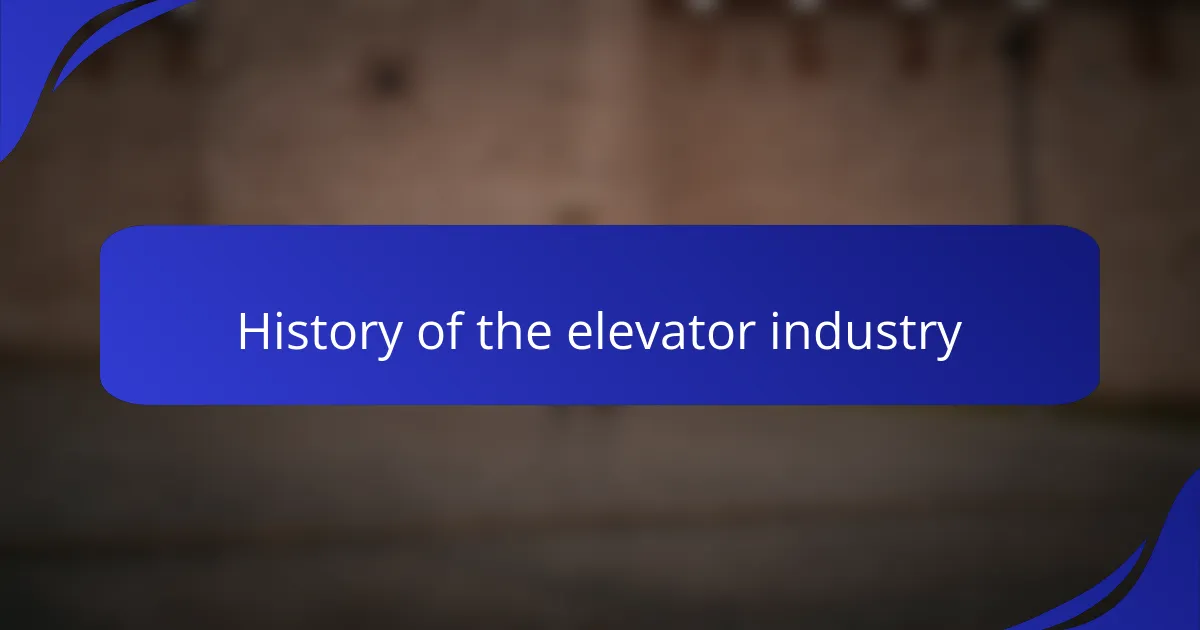
History of the Elevator Industry
The elevator industry has a rich history that dates back to ancient civilizations. Can you imagine the ingenuity required to transport goods and people before modern technology? Early elevators, often powered by human or animal labor, laid the groundwork for the mechanical innovation we see today. They evolved from simple pulleys and platforms into complex systems that dramatically changed urban landscapes.
In the 19th century, the invention of the safety elevator by Elisha Otis was a significant turning point. His safety brake invention not only made elevators safer but also popularized vertical transportation in tall buildings. This revolutionary idea sparked rapid growth in urban architecture, allowing cities to expand vertically rather than horizontally.
Looking back, I often think about how these advancements have shaped our daily lives. Elevators connect us, allowing accessibility and fostering social interaction across various levels of buildings. It’s fascinating to see how such a simple mechanism has become integral to modern society.
| Era | Key Developments |
|---|---|
| Ancient Times | Pulleys and lifting mechanisms powered by humans or animals |
| 19th Century | Otis’s safety elevator revolutionizes safety and promotes vertical construction |
| 20th Century | Hydraulic and electric elevators improve efficiency and accessibility |
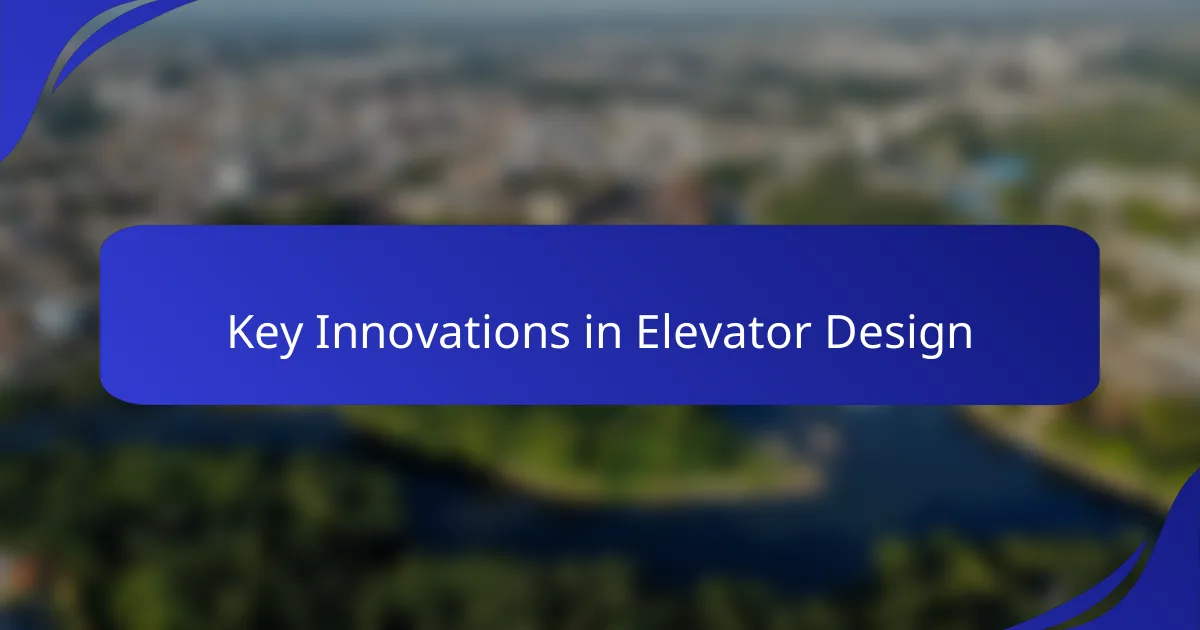
Key Innovations in Elevator Design
When I think about Thyssenkrupp’s contributions to elevator design, I can’t help but admire their focus on innovation. Their modular elevator system, for instance, revolutionized the way we think about vertical transport in buildings. It’s not just about moving people but enhancing the overall architectural aesthetic and functionality of structures.
One of my favorite innovations is the MULTI system, which uses magnetic levitation technology. Imagine an elevator that can move horizontally as well as vertically! This has truly changed the game, enabling architects to unleash their creativity without the constraints of conventional design. It’s a testament to how much design can influence our everyday experience in buildings.
Their use of eco-friendly materials and energy-efficient designs also stands out. As someone who values sustainability, I find this approach not only innovative but essential in today’s world. Thyssenkrupp is leading the charge towards a greener future in the elevator industry, setting a benchmark for others to follow.
| Innovation | Description |
|---|---|
| Modular Elevator System | Enhances architectural design by allowing versatile configurations. |
| MULTI System | Utilizes magnetic levitation for vertical and horizontal transport. |
| Eco-Friendly Designs | Incorporates sustainable materials, focusing on energy efficiency. |
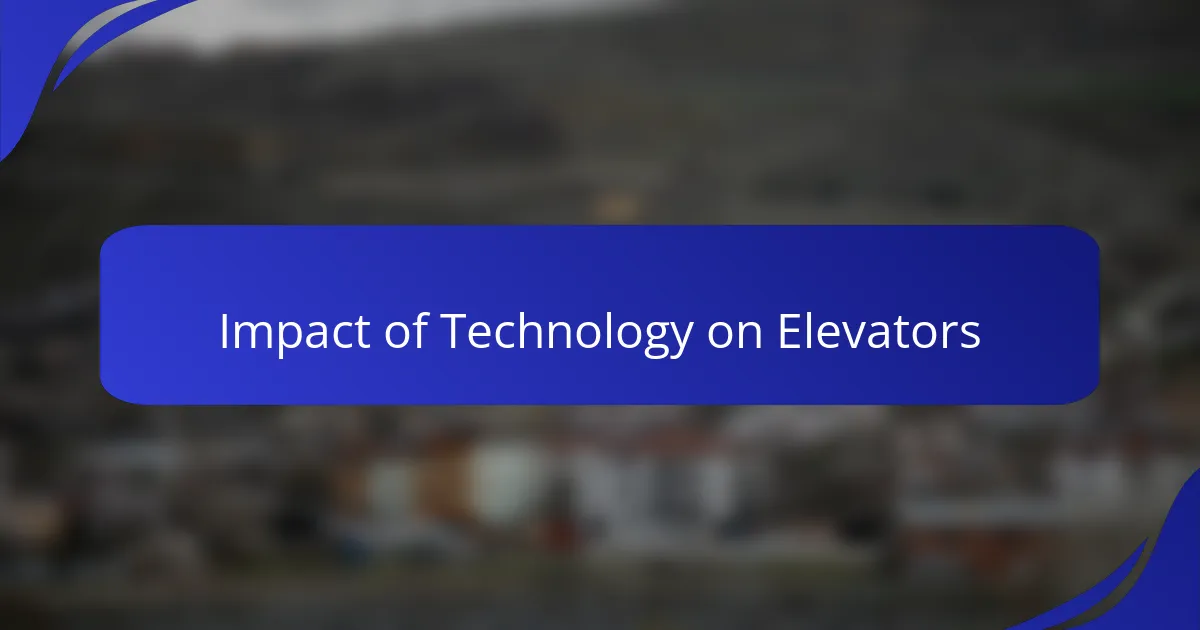
Impact of Technology on Elevators
The impact of technology on elevators has been nothing short of transformative. Innovations like Thyssenkrupp’s magnetic levitation technology elevate the traditional elevator system and push the boundaries of what is possible in vertical transportation. I remember my first encounter with a Thyssenkrupp elevator; it was both smooth and eerily quiet, a stark contrast to the old systems I was used to.
Additionally, advancements in smart technology have made elevators more efficient and user-friendly. For instance, the integration of IoT (Internet of Things) allows for predictive maintenance, significantly reducing downtime. It’s fascinating to think about how these developments not only enhance passenger experience but also contribute to the sustainability of building operations.
| Technology | Impact |
|---|---|
| Magnetic Levitation | Eliminates the need for traditional cables, allowing for faster and smoother rides. |
| IoT Integration | Enables predictive maintenance, improving reliability and efficiency. |
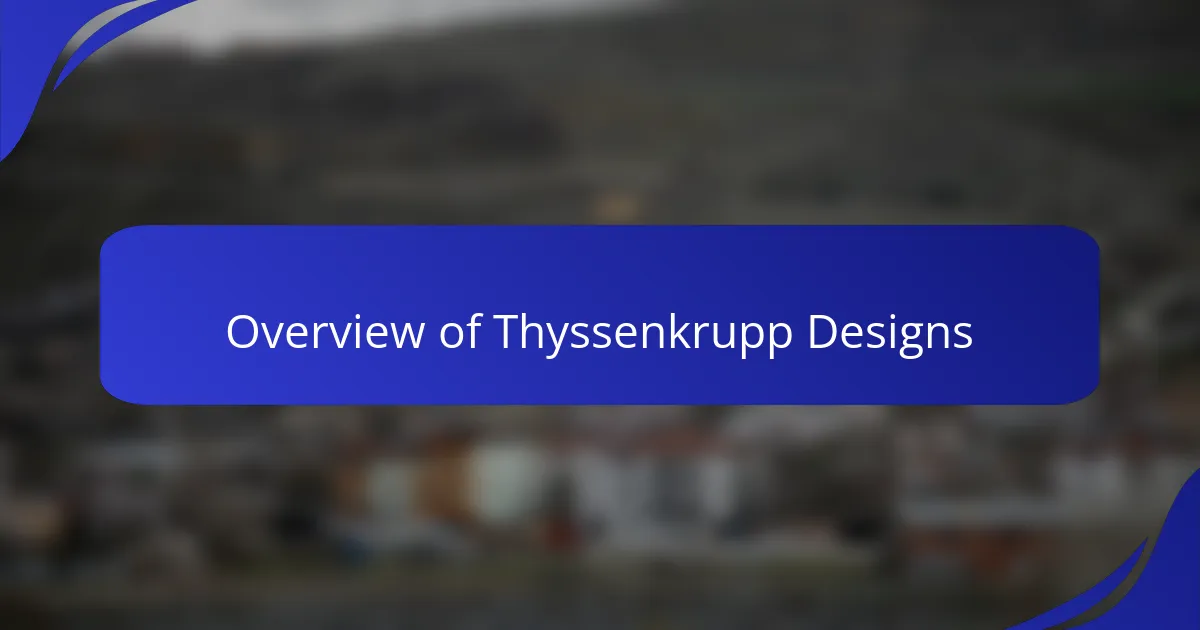
Overview of Thyssenkrupp Designs
Thyssenkrupp has truly transformed the elevator industry with its innovative designs, pushing the boundaries of what we thought was possible. I remember the first time I encountered their MULTI system, which uses magnetic levitation to enable elevators to move both vertically and horizontally. It felt like stepping into the future; the sheer ingenuity and potential of moving beyond traditional elevator systems really captivated me.
Their designs aren’t just about functionality; they also emphasize aesthetics and user experience. From sleek, modern cabins to transparent shafts, Thyssenkrupp is reimagining how elevators can fit into architectural spaces. It’s fascinating how the company harmonizes technology with design to create not just elevators but a seamless journey for users.
- MULTI system: Elevators that move horizontally and vertically using magnetic levitation.
- TWIN technology: Two cabins operating independently in a single shaft for increased efficiency.
- Eco-friendly designs: Emphasis on sustainability, including energy-efficient operations and recyclable materials.
- Smart technology integration: Elevators equipped with IoT for real-time data and predictive maintenance.
- Modular design: Flexibility in installation and customization, allowing for unique architectural solutions.
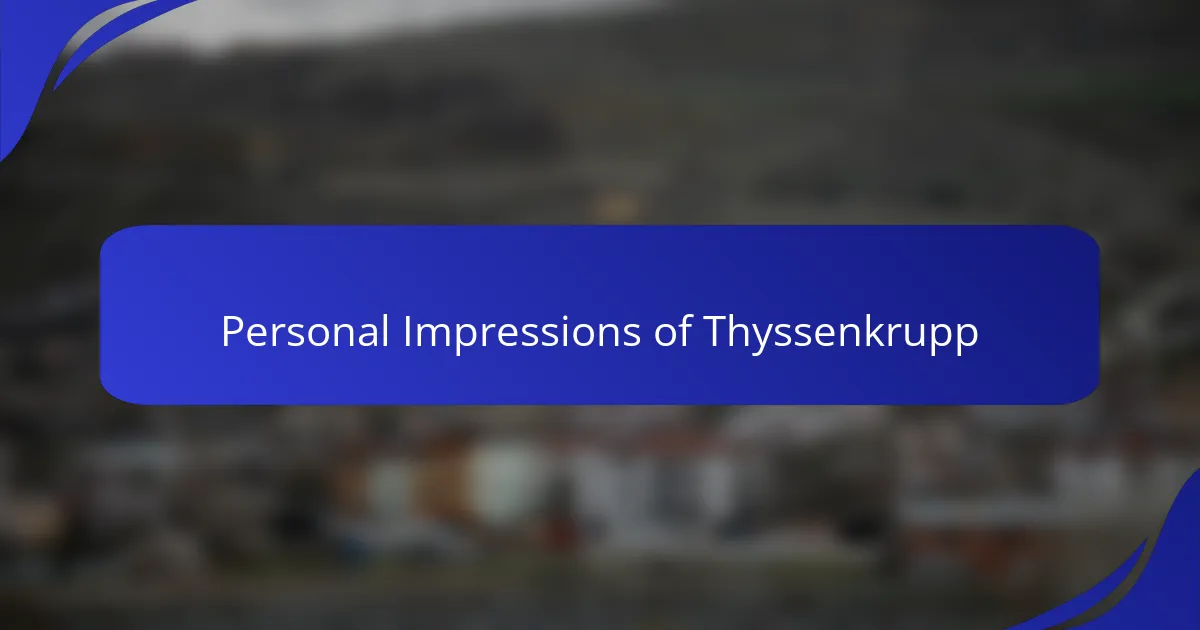
Personal Impressions of Thyssenkrupp
When I think about Thyssenkrupp, I can’t help but recall the first time I stepped into one of their MULTI elevators. The sensation was unique—feeling the elevator move smoothly and silently, horizontally as well as vertically, left me in awe. It made me wonder what other innovations lay just beyond the horizon of our everyday experiences.
I’ve always appreciated companies that don’t just settle for the status quo, and Thyssenkrupp exemplifies this spirit. Their commitment to sustainable design resonates with me, particularly their use of eco-friendly materials. It’s refreshing to see a brand actively working towards a greener future while also pushing technological boundaries. How can we not be excited about that?
Every encounter with Thyssenkrupp’s designs reminds me of the importance of combining style with performance. The modern cabins and transparent installations make a strong visual statement, elevating not just buildings but also the experience of using them. It makes me ask – how can design influence our moods and perceptions in such subtle yet significant ways? The answer, it seems, is wrapped up in Thyssenkrupp’s visionary approach.
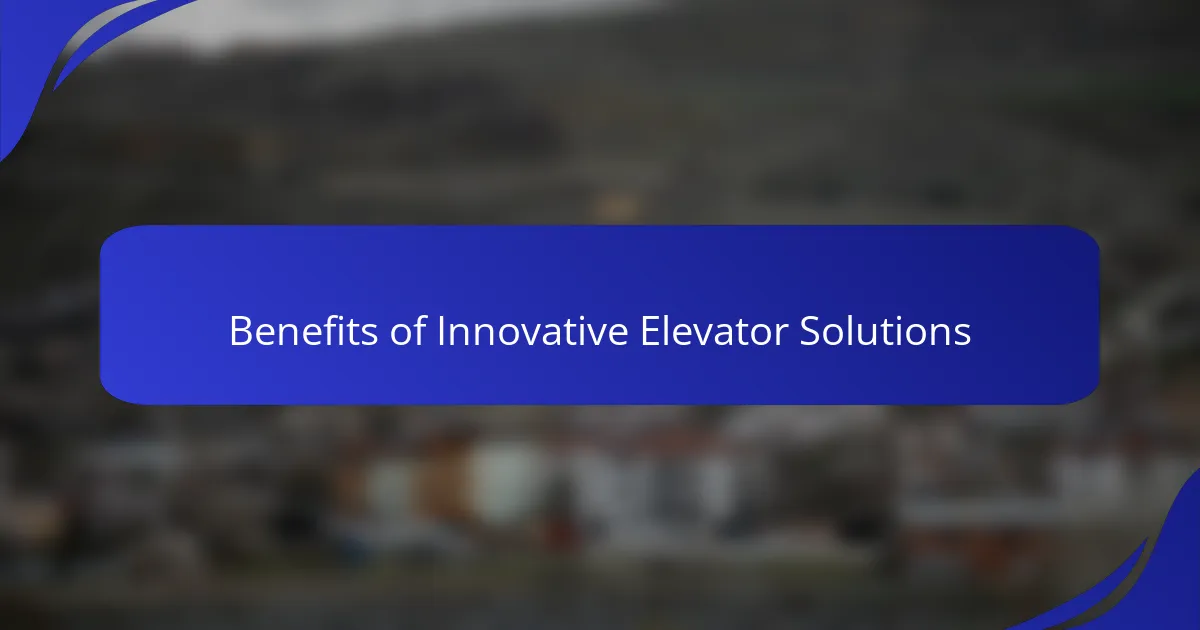
Benefits of Innovative Elevator Solutions
The benefits of innovative elevator solutions go far beyond functionality. I often find myself reflecting on the way Thyssenkrupp’s designs enhance the overall user experience. For instance, their MULTI system, with its ability to move both vertically and horizontally, changes the way we navigate buildings. It’s almost as if the building itself becomes a living entity, responding fluidly to our movements. Doesn’t that spark excitement about what smart technology can do in our everyday lives?
Sustainability is another significant advantage of innovative elevator solutions. Thyssenkrupp’s commitment to eco-friendly materials resonates deeply with my values. Knowing that these elevators not only reduce energy consumption but also utilize recyclable components brings a sense of responsibility to the forefront. It gets me thinking—how often do we consider the environmental impact of our choices in technology?
Furthermore, the aesthetic appeal of modern elevators can’t be overlooked. The sleek designs of Thyssenkrupp’s models add an elegant touch to any building, reminding us that innovation in machinery can also elevate architectural beauty. When I step into one of these visually stunning cabins, it transforms my mood. The experience is as much about enjoying the ride as it is about reaching my destination. Isn’t it fascinating how a well-designed elevator can enhance our daily routines?
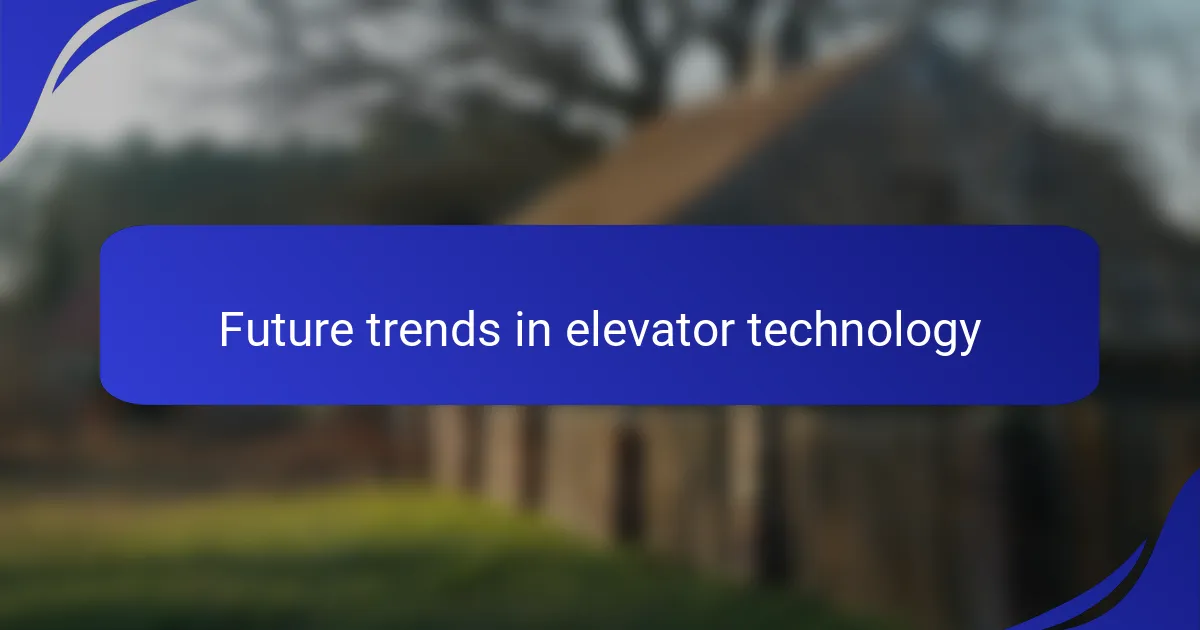
Future Trends in Elevator Technology
As I reflect on the future trends in elevator technology, I can’t help but feel excited about innovations that are set to change the way we experience vertical movement. Companies like ThyssenKrupp are pioneering designs that emphasize safety and energy efficiency, embracing a more sustainable approach. For example, the advent of smart elevators, which can adapt to user patterns, showcases how technology is intertwining with everyday life, enhancing convenience for all.
I remember when I first encountered a prototype of a magnetically levitated elevator. It was astonishing to see how such technology not only eliminates the need for traditional cables but also significantly reduces energy consumption. This innovative approach not only transforms building design but also paves the way for eco-friendly urban spaces.
The integration of IoT (Internet of Things) in elevator systems will further facilitate real-time monitoring and predictive maintenance, substantially improving user satisfaction and safety. It’s a thrilling time, as we move toward a future where elevator technology is smarter, safer, and more sustainable than ever before.
| Feature | Traditional Elevators |
|---|---|
| Design | Uses cables and pulleys |
| Energy Efficiency | Higher energy consumption |
| Technology Integration | Limited integration |
| Maintenance | Reactive maintenance |
| Smart Features | Minimal |
| Future Elevators | Maglev, IoT integration |
| Energy Consumption | Lower energy usage |
| User Experience | Static operation |
| Adaptability | Limited adaptability |
| Maintenance | Proactive monitoring |
| Smart Features | Highly customizable |
